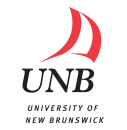Forestry
A minimum grade of C is required for prerequisite courses.
NOTE: See the beginning of Section H for abbreviations, course numbers and coding.
| FOR2113 | Introduction to Wildlife and Aquatic Ecology | 3 ch (3C) |
|---|---|---|
Emphasizes interdependence of forest organisms and the terrestrial and aquatic components of their environment, especially in the context of industrial forestry. Introduces an ecological approach to impacts of harvesting on forest ecosystems and the major groups of wildlife inhabiting forests, including species at risk. Covers identification and habitat requirements of selected wildlife species, and applicable legislation. | ||
| FOR2505 | Forest Soils: Formation and Properties | 5 ch (3C 3L) |
|---|---|---|
Students examine relationships between soils and plants, and related roles of water and nutrients. Factors that restrict root growth, and processes that influence soil development are revealed through field exercises and laboratory work. Effects of natural and anthropogenic disturbances on forest soils and subsequent plant responses are emphasized. | ||
| FOR3000 | Business Management and Human Factors in the Forestry and Environmental Sectors | 3 ch (3C) |
|---|---|---|
| FOR3303 | Photo-interpretation, Photogrammetry and Remote Sensing in Forestry | 3 ch (3*L) |
|---|---|---|
Provide interpretation of aerial photographs of forested areas for stand and site characterization. Remote sensing products other than aerial photographs, such as digital optical images, thermal infrared, and radar images will be introduced. Basics in digital image processing will be covered to address the conversion of remote sensing images to GIS layers. It is a self-paced, web-based course without scheduled lectures. UNB campus students do labs during scheduled sessions. Labs are self-paced and web-based for Open Access Learning Program students. Le cours est aussi disponible en français. NOTE: Students cannot receive credit for both FOR 3303 and FOR 3313. | ||
| FOR4096 | Forest Landscape Design and Management | 4 ch (3C 3L) |
|---|---|---|
Upon successful completion of this course, students will be able to design and evaluate strategic forest management strategies aimed at meeting a variety of environmental, social, and economic forest values. Strategy design will require students to combine skill in use of state-of-the-art forest estate planning systems with an understanding of natural disturbance dynamics, forest certification, and forest land zoning concepts. The course builds on student abilities acquired in prerequisite courses FOR 2006 and FOR 3006. Prerequisites: FOR 2006 and FOR 3006, or permission of instructor. | ||
| FOR4101 | Professional Internship in Forestry and Environmental Management (Cross-Listed: ENR 4101) | 3 ch (3C) (LE) [W] |
|---|---|---|
Prerequisite: Prior work experience and either ENR 3002 or FOR 3000 | ||
| FOR4723 | Ornithology | 5 ch (3C 3) W |
|---|---|---|
Studies birds; natural selection, morphological adaptations, migration, behaviour, and reproduction, in an ecological way. Prerequisite: BIOL 2093, or BIOL 2063, BIOL 2068, or permission of the instructor. Credit may not be obtained for both FOR 4723 and BIOL 4723. | ||
| FOR4973 | Forestry Field Camp | 2 ch (6D) |
|---|---|---|
An intensive 6-day series of field exercises, starting before the Fall Term, involving low student/faculty ratios, and designed to improve integrative and quantitative-forecasting skills. Evening sessions provide overviews of the scope of forest-ecosystem management generally, and in relation to the specific field-camp situation. Students are charged for food and lodging and part of travel costs. Prerequisite: Substantial completion of Years 1-3 core. | ||
| FOR5281 | Introduction to GIS for Forestry & Environmental Management | 3 ch |
|---|---|---|
The course introduces GIS via the industry-standard ArcGIS Pro software and emphasizes learning GIS through applied environmental management scenarios; specifically, applications in land base inventory and mapping using data for the UNB Woodlot. | ||
| FOR5282 | Advanced GIS for Forestry & Environmental Management | 3 ch |
|---|---|---|
The course teaches advanced GIS via the industry-standard ArcGIS Pro and emphasizes learning GIS through applied environmental management scenarios; specifically, applications in land base inventory and mapping using data for the UNB Woodlot. | ||
| FOR5284 | LiDAR for Forestry and Environmental Management | 3 ch |
|---|---|---|
This course provides an introduction to LiDAR technology, including sensor types, platforms and acquisition parameters before springing in to the use of airborne laser scanning (ALS) data for environmental management and planning. Students will use ArcGIS and LAStools software to explore 3D point cloud data and generate useful derivative surfaces and analysis workflows including point cloud measurement & reclassification, DEM and DSM creation, point cloud stratification for landscape modelling and habitat suitability, trail planning, flooding potential, etc. | ||
| FOR5801 | Structural Performance of Engineered Wood Products | 3 ch (2C 3L) |
|---|---|---|
Prerequisites: FOR 2803, ME 2111. | ||
| FOR5811 | Manufacturing of Wood Products | 3 ch (2C 3L) |
|---|---|---|
Prerequisite: FOR 2803 or permission of the instructor. | ||
| FOR5920 | Forestry in Atlantic Canada (A) | 2ch (3C) |
|---|---|---|
This course is designed for students new to Atlantic Canada. The course provides an overview of forest history, plant distribution, forest utilization, forest conservation, and current forest management issues in Atlantic Canada. Guest lectures, small group discussions, and field tours will be used. | ||


